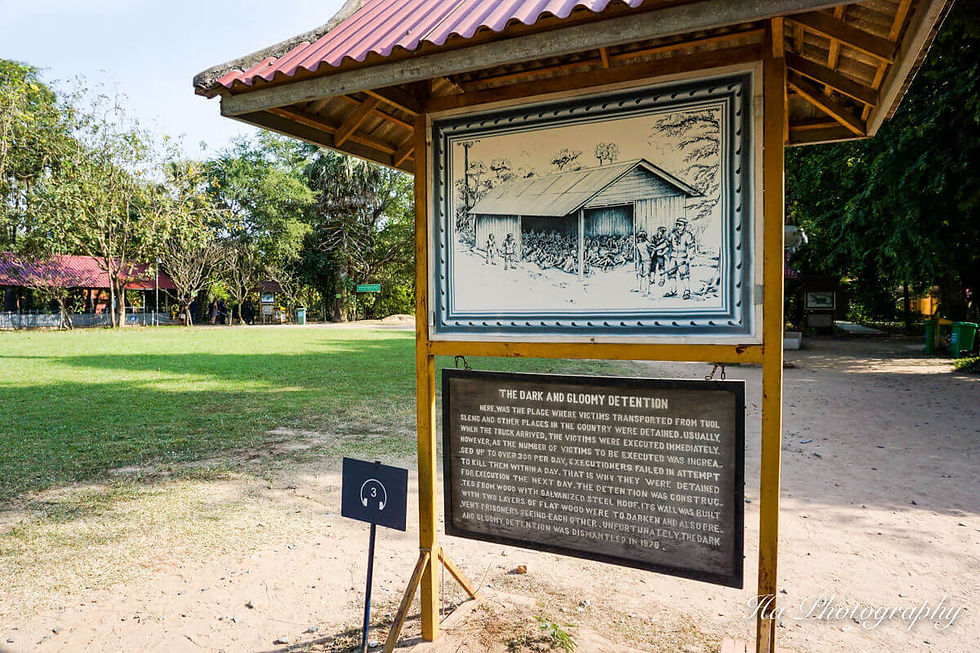[2/2] The Khmers Rouges genocide - Killing Fields, the inhumane acts discovered at Choung Ek
- alexischargy
- Jun 29, 2023
- 2 min read
The horror of the S-21 prisoners, as was the case in Cambodia’s other prisons, was not, however, the culmination of the horror of the crimes committed by the Khmer Rouge group. The prisoners who provided the necessary information to the prison and its leader, Duch, were then deported to a country village a few kilometres south of the city of Phnom Penh: Choeung Ek.

This next step in the lives of the unfortunate prisoners would be the last. It would also be particularly short. After the prisoners arrived there, the majority of them were executed within minutes, where possible.
What remains most frightening is the way in which prisoners are put to death and the tools used to do so. Unfortunately, the Khmer Rouge soldiers had no lack of imagination to push the scenes ever further into horror.

Starting with hanging this tree at the entrance to the site, in front of which prisoners would inevitably pass if they had the "chance" to live a few hours longer than the others. This slow killing, in which the condemned was unraveling and screaming, was reserved for troublemakers. The soldiers' interest was to cover the noise of the other executions.
Executions were usually quick, but soldiers were careful never to waste ammunition for a "task" that would not necessarily require it. For example, many crimes have been committed with a species of bamboo cut with cutting branches or sometimes with bare hands. The bodies were then thrown into pits, or sometimes more than 400 bodies were packed, and nearly 9000 bones have already been discovered there.

The Khmer Rouge leaders were afraid, however, of instilling a sense of revenge and revenge in the families, and that is why it was decided to eliminate whole families, right down to the newborn, without distinction. The most shocking image that will remain in me is this tree where the smallest and weakest children have been killed by being held by their feet and beaten to death against this tree, which today represents the unimaginable cruelty of this regime.
This systematic genocide of the Khmer people will have decimated 1/4 of the country's population and remains etched in many memories. The history of a country, all the more so the near and tragic history must never be set aside by both local populations and tourists.The duty of remembrance is precious in order never to fall into such horror again. Not only is it not the only place in Cambodia where atrocities of this magnitude have taken place, but a memorial stele has also been built near the town of Battambang.

![[1/2] The Khmer Rouge Genocide - A High School Becomes Jail and Traces Indelible Crimes](https://static.wixstatic.com/media/37b45c_6bc5d85b3b324ba28590d2b2a8988d3c~mv2.png/v1/fill/w_980,h_503,al_c,q_90,usm_0.66_1.00_0.01,enc_avif,quality_auto/37b45c_6bc5d85b3b324ba28590d2b2a8988d3c~mv2.png)
Comments